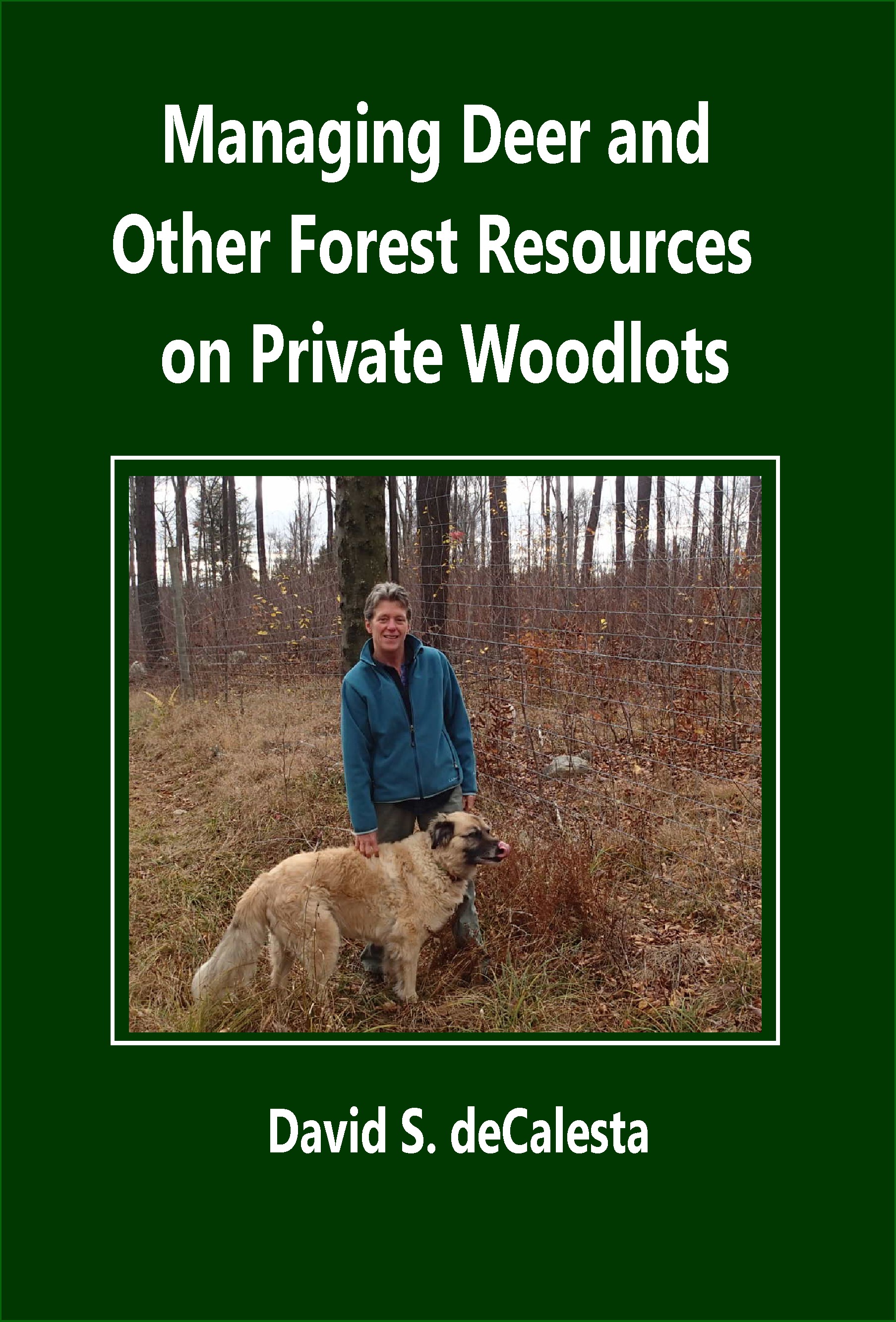
Managing Deer and Other Forest Resources on Small Woodlots is for owners of woodlots smaller than 200 acres. These small, private forestlands make up 80-90% percent of private forest land acreage in the Northeast and Southeast. Nearly 100% of forest lands in this size class are privately-owned.
Goals of these woodlot owners are focused on non-timber goals: the top three include beauty and scenery; estate value and legacy; and investment. Producing timber for harvest is the fifth-most important goal falling between Privacy (#4) and Biodiversity (#6).
Many small woodlot owners do not have the resources, or in many cases the need, to hire trained and experienced full-time forestry/wildlife specialists in-house. Rather, they hire them as consultants on an as-needed basis.
The short tenure of small woodlot owners (often less than 10 years) is another reason they do not need the services of in-house professional foresters and/or wildlifers: most management practices for improving timber quality/quantity and wildlife habitat require at least ten years for implementation and fruition.
Small woodlot owners who do want to manage sustainably for forest resources, including deer, can benefit from key knowledge categories.
- They must have a firm set of goals for the desired condition (including quality and quantity) of identified forest resources.
- They need a firm grasp of the ecological, legal, environmental, management, and human dimension factors that affect individual resources in their management programs.
- They must be aware of the environmental, legal, and biological factors (including landscape) that influence their ability to achieve goals.
- They must be able to characterize the starting condition of desired forest resources, as obtained through monitoring.
- They must know how to manage on-site factors, such as vegetation and deer abundance that will influence how and whether they can achieve their resource goals.
- They must know how and be committed to monitoring progress towards reaching and maintaining goals.
- They will be interacting with other groups of people (neighboring landowners, persons who may want to hunt and fish on their lands, natural resource agency personnel who can ensure that their management is aligned with acceptable and legal wildlife and vegetation management practices) - they will need to know how to interact productively with these and other groups of people.
- They will need to be aware of the costs of performing the above required tasks
- They should be aware of and use government programs that provide economic support to manage their resources.
- Should they need them (probably) they will need to know how to contact competent and certified forestry/wildlife consultants who can help them manage their forest resources.
To get an overview of the book chapter-by-chapter click on Details and Chapters.
instructions on how to buy the book will be available when the book is published (late fall/early winter 2020).